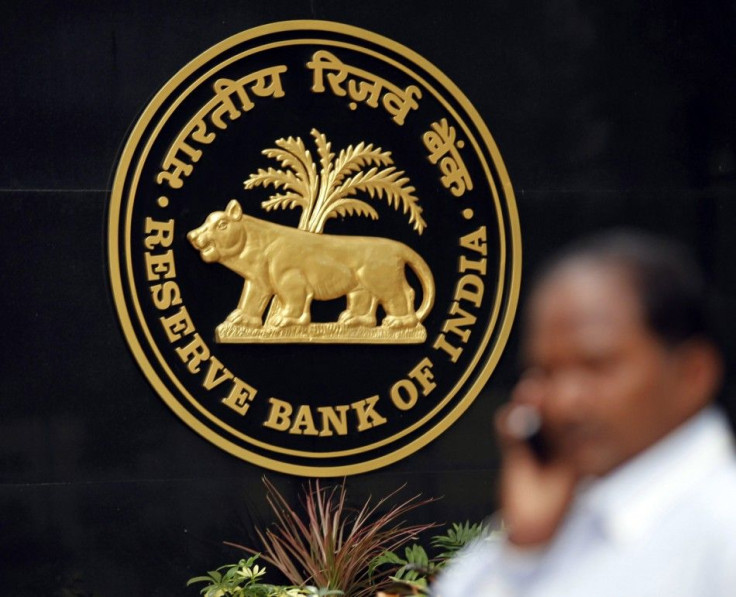RBI Holds Repo Rate Despite 'Big Bang' Reforms

The Reserve Bank of India (RBI) left interest rates unchanged but cut the cash reserve ratio for banks on Monday, disappointing market hopes that it would follow up the government's unexpected spate of bold reform measures by reducing borrowing costs.
While the RBI praised New Delhi's long-stalled policy initiatives to bolster growth and shore up its creaking fiscal position, it said the primary focus of monetary policy remained fighting stubbornly high inflation.
The government, in turn, made clear it wants a rate cut at the bank's next monetary policy review in six weeks time, and said it was not yet finished with reforms.
"I am very confident that between now and October 30, since the government is expected to take a number of additional policy measures and also lay out the path of fiscal correction, the response of RBI on October 30 will be far more supportive of growth," Finance Minister P. Chidambaram told reporters.
The RBI held its policy repo rate at 8 percent, in line with expectations in a Reuters poll taken on Friday, hours before New Delhi said it would allow foreign direct investment in industries including supermarkets and airlines. On Thursday, the government had announced a sharp increase in the price of heavily subsidised diesel.
Several economists said their expectations for when the RBI, which has two more policy reviews scheduled this year, might cut rates remained unchanged. The most recent Reuters poll forecast a median 25 basis point rate cut by the end of 2012.
"The RBI is still focused on managing inflation. Future moves will be a function of how the government sorts out the fiscal mess," said Rajeev Malik, senior economist at CLSA in Singapore.
"A rate cut today would have made the RBI a laughing stock given that inflation is high, rising and will rise more, and it is already above the RBI's forecast."
RESERVE RATIO CUT
The RBI cut the cash reserve ratio, the share of deposits banks must keep with it, by 25 basis points to 4.5 percent in a move to inject about 170 billion rupees into the banking system ahead of expected liquidity tightness due to advance tax payments and festive-season demand.
"The RBI felt compelled so they have chosen the least harmful way of responding by a token CRR cut," said A. Prasanna, an economist at ICICI Securities Primary Dealership in Mumbai.
The rupee and bond prices weakened immediately after the RBI decision, with the yield on the 10-year bond rising 5 basis points from before the RBI statement to 8.17 percent. The one-year swap rate rose 8 bps to 7.68 percent from before the release.
The BSE Sensex also trimmed gains.
"The government's recent actions have paved the way for a more favourable growth-inflation dynamic by initiating a shift in expenditure away from consumption (subsidies) and towards investment," the RBI wrote in its policy statement.
"However, in the current situation, persistent inflationary pressures alongside risks emerging from twin deficits - current account deficit and fiscal deficit - constrain a stronger response of monetary policy to growth risks," the RBI said.
REFORM FRENZY
The RBI has held borrowing costs steady since a deeper-than-expected 50 basis point cut in April, and has repeatedly called on the government to do its part by improving its fiscal position, which had fuelled some expectation that it might cut rates as a gesture in reply to the government's moves.
In an unexpected 24-hour frenzy late last week, New Delhi unveiled a slate of measures to rein in a ballooning fiscal deficit and avoid being the first of the big BRICS emerging economies to have its credit rating downgraded to junk.
But a spike in August inflation data, released on Friday, from July's near three-year low appeared to put paid to any hopes the diesel price hike and other reforms might persuade the RBI to move on rates.
India's wholesale price index rose a higher-than-expected 7.55 percent in August from a year earlier, mainly driven by higher food prices.
The diesel price rise will aggravate short term inflation. But, along with the measures unveiled on Friday, it shows the government is serious about fiscal consolidation and encouraging investment, and may make RBI Governor Duvvuri Subbarao more inclined to ease monetary policy sooner than later.
The government kicked into gear late last week after a wave of corruption scandals had weakened it and led to months of little substantive policy action, souring investor sentiment and putting at risk India's investment-grade credit rating.
It still must overcome political opposition, including from within the ruling Congress party coalition, to make the reforms stick.
Analysts had cut their economic growth forecasts for the current fiscal year - some to as low as 5.1 percent - amid stalling industrial and manufacturing activity and concerns about the current account and fiscal deficits and lack of reforms. By comparison, the prime minister's economic advisory panel's trimmed-down forecast of 6.7 percent looks optimistic.
India was growing at a nearly double-digit pace before the 2008 global financial crisis.
Meanwhile, the U.S. Federal Reserve's aggressive stimulus plan last week complicates the RBI's task, as the injection of liquidity delivered by the Fed's measures may push up global commodity prices and add to inflationary pressures in India.
© Copyright Thomson Reuters {{Year}}. All rights reserved.





















